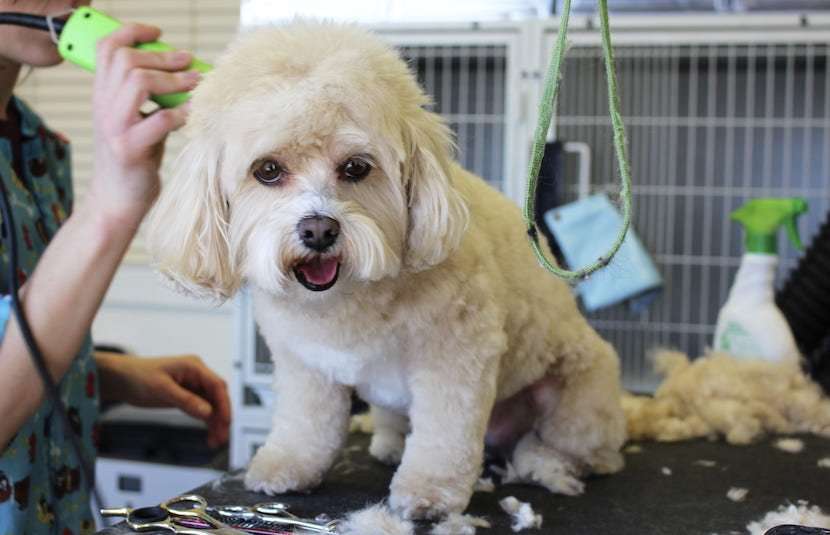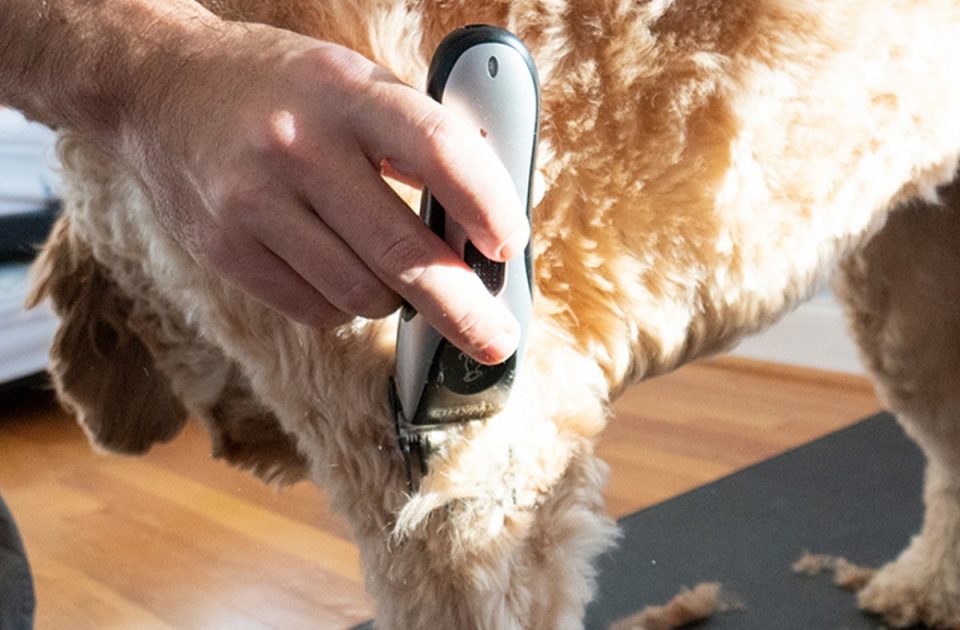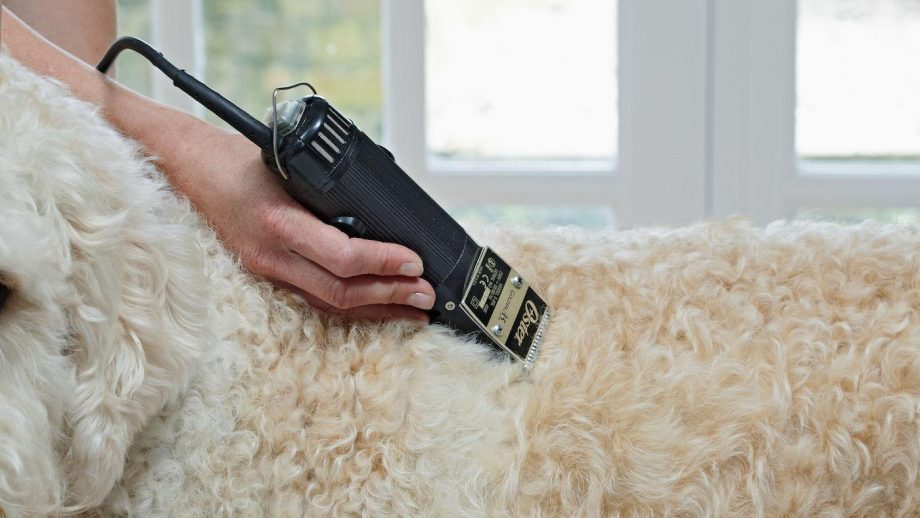Contents
Given the vast number of canines in existence across the globe, pet grooming accessories are in good supply. Take the many dog hair clippers as an example, each with a different speed setting, design be it corded or cordless, and operation like low-vibration or silent mode. As such, determining which dog clippers to purchase can be a bit of a challenge.
Want to purchase the right grooming tool of the sort but are overwhelmed by the different choices? The following is an overview of the basic kinds of dog clippers in order to assist you in finding the most cost-effective option. While there are five primary categories, subjective preference determines which one is superior to the others.
Each of these categories contains both inexpensive and exorbitant products. When the price falls below $50, dog clippers are deemed inexpensive; when they exceed $150, they are regarded as professional-grade.
1.Corded Dog Clippers

Because they are powered by an electrical cord, corded dog clippers require a readily available power source. Professional and amateur dog groomers consider corded trimmers to be quite popular. The cost of these corded clippers varies from low-priced to premium. It is possible to locate a corded dog clipper with any desired feature. Corded models feature rapid rotation rates (or high rotations per minute), low vibration and noise, and a professional-grade construction. Wahl, Andis, and Oster are the leading manufacturers of corded and cordless clippers, respectively.
Professional groomers generally prefer models with a pulling cord, as it facilitates the simultaneous grooming of multiple dogs. Topping a grooming session to allow a battery to recharge is unnecessary since operating on a constant power source eliminates the need to purchase additional batteries for rotation. Corded clippers may, on average, be lighter than those powered by rechargeable internal batteries; however, this varies considerably between models.
2.Cordless Dog Clippers
A rechargeable battery powered cordless hair clippers which are super popular and utilised by both amateur and professional groomers. The battery type utilised in the cordless dog clipper may vary, spanning from standard rechargeable batteries to lithium batteries known for their extended lifespan. Similar to their corded counterparts, the cordless tools can have any feature a groomer could desire, and all three major manufacturers offer cordless models.
It is possible to transport cordless clippers to dog shows or other locations where locating a functional power source may be problematic. When travelling to specific regions where the plug-in may not be accessible without additional attachments, they may serve as a secondary plan. A few essential incisions are made with cordless dog clippers here and there prior to a possible performance.
Additionally, cordless hair clippers do not have a lengthy cord trailing behind each manoeuvre performed during grooming. They may be less noticeable to the dog due to the absence of erratic cord movement during appliance operation. Canines and those in charge of the grooming may benefit from a more pleasant grooming experience in the absence of a cord. Groomers appreciate the freedom of motion that a cordless device provides, particularly when performing precise cuts on the dog’s muzzle, limbs, and around the genital area.
However, keep in mind that a home groomer with a single clipper will require a minimum of 45 minutes and a maximum of one hour to recharge the battery sufficiently. Although significantly more expensive, models with lithium batteries perform better in terms of battery charge time and recharge speed. Recharging a deceased battery could cause an almost one-hour delay in grooming, but this should not be a significant issue if you prepare in advance, unless you have multiple canines.
3.Single-Speed Dog Clippers

The blade of single-speed dog clippers rotates at a single velocity. It is impossible to cause the blade to travel quicker or slower than its intended speed. Owing to the high temperatures of the summer, individuals who own or frequently maintain breeds with coats that demand a rapid shear prefer single-speed dog clippers.
The majority of dog clippers with a single speed have cables as opposed to being cordless. However, they also include the majority of other characteristics, such as replaceable blades and rapid rotation. A single-speed dog clipper has the advantage of minimising overheating of both the motor and blades, in contrast to a variable-speed motor.
The presence of heat can cause distress for the dog and the groomer alike. An additional advantage pertains to the price of the dog clipper. In general, single-speed dog hair clippers are more affordable than their counterparts with multiple or variable speeds. They are ideal for quick shears on certain varieties at the end of winter and can be coupled with a low-cost trimmer for the concluding touches.
On dogs requiring more intricate trims, a proficient groomer may employ a single-speed clipper; however, an inexperienced individual endeavouring to perform such a cut with a single-speed clipper is highly probable to encounter an error.
4.Variable-Speed Dog Clippers
With a larger budget, these are popular among both professionals and amateurs. These clippers feature an adjustment for varying cutting rates. While there are numerous two-speed dog clippers available, the majority of popular models feature five speeds. Beyond five is comparable to sharp razor blades, if you catch my drift.
By operating at lower rates, the groomer is afforded the opportunity to devote greater attention to more intricate grooming areas, such as perfecting the fringe on the tail of a poodle. A slower pace dismantles the finest coat, while a faster speed addresses the thicker ones. Clippers with variable speeds enable a professional groomer to utilise a single instrument for various dog strains and tasks (bulk, delicate areas, detail work, etc.).
One limitation of variable speed dog clippers is that the inclusion of additional motor gearing results in hand overheating of the device. Naturally, there is considerable variation in the maximum temperature that these clippers can achieve across different models and manufacturers.
5.Low-Vibration/Quiet Dog Clippers

Certain dog clippers are promoted as having minimal vibration and low noise levels. This reduces the vibration and noise produced by the clipper’s operation, which is perceived by both the dog and the individual operating the clippers. It is possible to reduce the pace of the motor’s revolutions per minute or incorporate a design element that effectively attenuates the sound of dog clippers.
This type of clipper is designed for anxious, easily startled puppies that also require special doggy blankets. The disadvantage of these varieties of dog clippers is that they may sacrifice performance for the sake of cost. Blades may rotate at a reduced rate per minute when the motor is silent. This causes challenges when attempting to trim sizeable matts or certain varieties, such as sheepdogs, whose fur is simply enormous.
In less expensive dog clippers, the power sacrifice is readily apparent. Nevertheless, the design of the dog clippers from our three leading manufacturers enables the SPMs/RPMs to remain competitive in comparison to their noisier counterparts. The Wahl BravMini+ has a respectable 5,350 strokes per minute of cutting force and produces silent operation.

